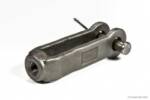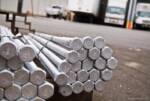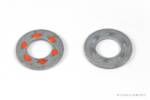Newest FAQs
Under the new F3125 specification, which now governs A325 structural bolts, there is a supplementary requirement that allows A325 bolts to differ in head geometry and thread length (excluding fully threaded A325s) as required by the customer. When these alternate dimensions are required, the bolts shall be stamped “A325S”, with the “S” indicating special. Under the... Read more

According to ACI 318-05 Appendix D.1, a “Ductile Steel Element” is an element with a tensile test elongation of at least 14 percent and reduction in area of at least 30 percent. The minimum elongation percentage for any diameter of F1554 Grade 55 anchor rod is 21% and the minimum reduction of area percentage is... Read more
Yes, Portland Bolt can rush an order though production. Portland Bolt has what we recognize as “standard lead times.” We believe they are some of the fastest in the industry. These lead times consider the manufacturing processes required to complete an order. For instance, if we are going to manufacture 1” x 36” hot-dip galvanized ASTM... Read more
Yes, Portland Bolt provides domestic fasteners with paperwork for DOT projects all over the US. We routinely have state inspectors from Oregon, Washington, and California in our facility inspecting and tagging orders for our customers. For contractors and steel fabricators in other states, we are able to ship the materials to the jobsite, or to... Read more
Technically you should not weld to a clevis which is made of C1035 steel and has a carbon content of approximately 0.35%, too high to be normally considered a weldable material. If the engineer has required welding to the clevis, then a special welding procedure should be followed that is outlined in AWS D1.1 or... Read more

While we’ve made it very easy to submit an inquiry online, we don’t have a system that allows a purchase to be made online through a few simple clicks or an online listing of prices. Portland Bolt is a manufacturer of nonstandard construction bolts, which does not lend itself to an ecommerce site. While there... Read more
A common question when deciding whether hot-dip galvanizing is an adequate corrosion resistant coating for a fastener is, “How long will the galvanizing last before the steel begins to corrode?” The last thing you want to do is install a bolt in a corrosive environment, only to have it begin to rust a year later. Unfortunately... Read more

Load indicating washers are used to indicate the achievement of a specified minimum bolt tension. The ASTM specification covering load indicating washers is F959 and has two different types; 325 (type 1 and type 3) and 490 (type 1 and type 3). When used, the washer is typically placed beneath the head of the bolt. As the... Read more

Standard flat washers are a mass-produced item that Portland Bolt stocks as an accessory to accompany custom sized bolts we manufacture. A washer is a steel ring placed under a nut and/or bolt head to spread the pressure when the assembly is tightened. A washer also creates a smooth bearing surface for the nut to turn... Read more

A194 grade 7 nuts are commonly used nuts for both high temperature and low temperature applications, and is commonly paired with bolts made to either A193 or A320. When used in conjunction with A320 bolts in a low temperature application, or if specially requested, they are charpy tested to assure they will perform well in... Read more
